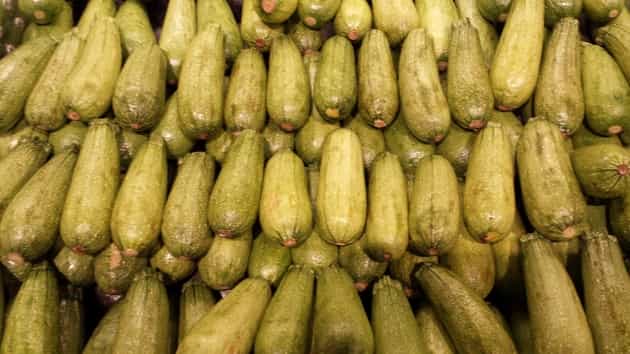Growing Zucchini Squash
Growing zucchini squash is now becoming popular. This is so because zucchini farming is uncomplicated and a zucchini can make huge quantities of scrumptious squash.
Now, let’s have a glimpse at how to plant zucchini squash.

Zucchini is a member of the cucumber and melon family and can be diversely utilized in many recipes such as breads, casseroles and desserts. A lot of chefs use zucchini as a flavorful side dish and use it just like other vegetables. For the information of many, zucchini is actually a fruit and is in fact, the inflated female zucchini flower’s ovary.
Kinds of Zucchini Plants to Grow
There are several varieties of zucchini plants to grow. Most of these variants grow well between May and August, the months wherein there is copious sunshine. You can opt for the “globe” kind, which is ideal for a grand meal presentation. Also, you can go for the “golden zucchini” variety, which is truly very attractive.
There are other varieties of zucchini available such as the Gadzukes, the kind that is ideal in small garden and needs not too much space. There is also the Black Beauty, which is a dark, compact zucchini and the Sweet Gourmet, the light green zucchini fruit that is known as the abundant producer.
On Planting Zucchini
There are two ways to plant zucchini. It can either be as individual plant or in groups. How you will grow the plant depends on you, according to how many plants you want to grow and how big is your space. If you intend to grow zucchini in your garden, then you need not have a large space but it can assure to give you huge produce during the peak season. Zucchini can continuously produce fruits even until the initial signs of the winter. Novices will find it uncomplicated to grow with the appropriate light and soil conditions.
Before planting the zucchini seeds, you must make sure that the soil is well drained, loose and loaded with organic matter. Utilize a soil with a nearly 6.0 pH level since zucchini can grow well in soil condition as this. Also, consider the warmness of the environment. So, if you are residing in a cold place, ensure that the temperature of the plants stays higher than 60ºF.
The moment you set the environmental and soil conditions, you can already begin planting your zucchini seeds. Plant your seeds about four inches apart and situate them where they can receive a lot of sunlight. They will start sprouting within 10-12 days although you have to wait for the sprouts to be 3 inches tall in order for you to transplant them.
In addition to abundant sunlight, the zucchinis also need at least two inches of water each week. If the plant is not able to receive enough water from the rain, supplement it with manual watering. You can make use of soaker hose or other means to give the plants the water they need but never use a sprinkler as it can cause the plants to have powdery mildew.
On Feeding Zucchinis
Nitrogen promotes stem and leaf growth. However, the moment the plants blossom, use fertilizers that are not rich in nitrogen so the zucchini direct energies to the production of fruits. Choose an organic fertilizer like liquid seaweed for side covering the zucchini when it initially start to blossom.
Harvesting Zucchinis
Harvest the fruits when they are still smaller, not more than 6 inches tall and still lean. Huge zucchinis have high water content, which weakens the taste and hardens the flesh while the small fruits are tender and contains more nutrients.
Comment
Categories
- Franchise Opportunities
- Wholesale Business Opportunities
- Small Manufacturing Business
- Farming Business Ideas
- Unique Business Opportunities
- Shop Business Ideas
- Small Business Opportunities
- Startup Company Ideas
- Home Based Business Opportunity
- Rural Business Opportunities
- Tips for Buying and Selling
- Starting Rental Business
- Ideas for Small Business
- Free Business Ideas
- Internet Business Ideas
- Store Business Opportunities
- Entrepreneur Business Idea
- Retail Store Ideas
- Service Business Ideas
- Advice for Small Business
- Financing a Small Business
- Restaurant Business Opportunities
- Small Business Articles
- Business Marketing and Advertising
- Repair Business Opportunity
- Professional Career Opportunities
- Business Insurance Information
- Instructor Guides


